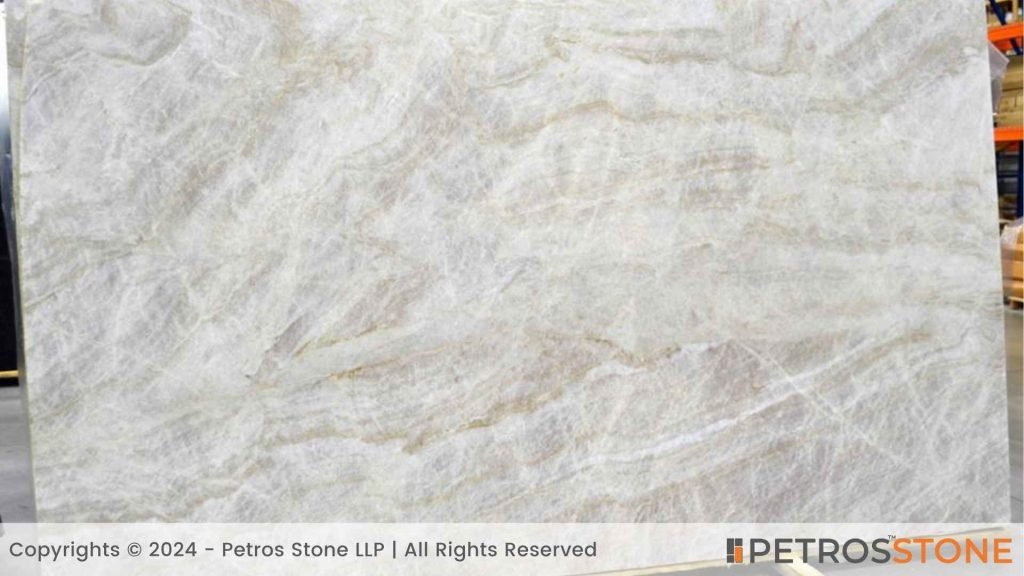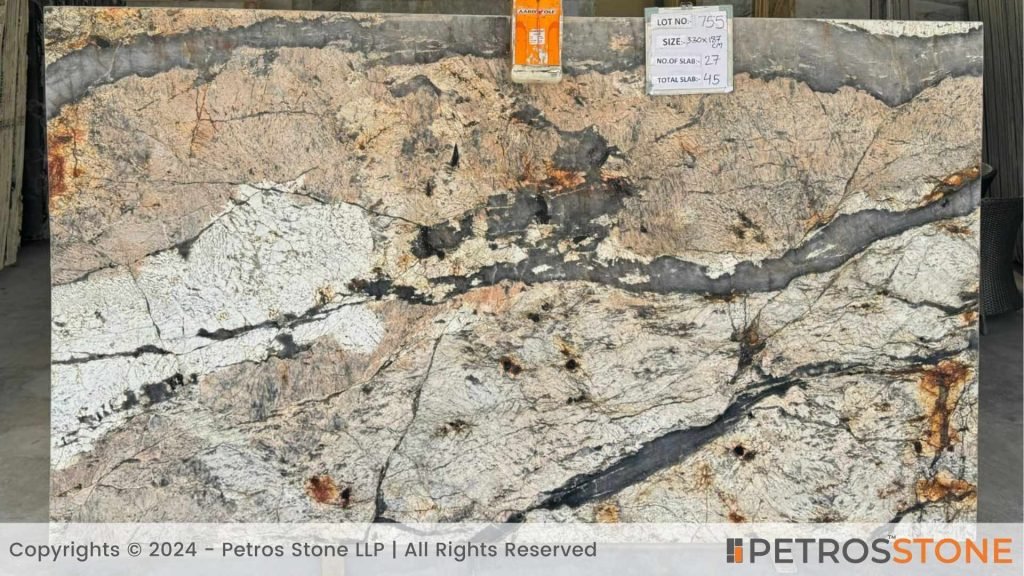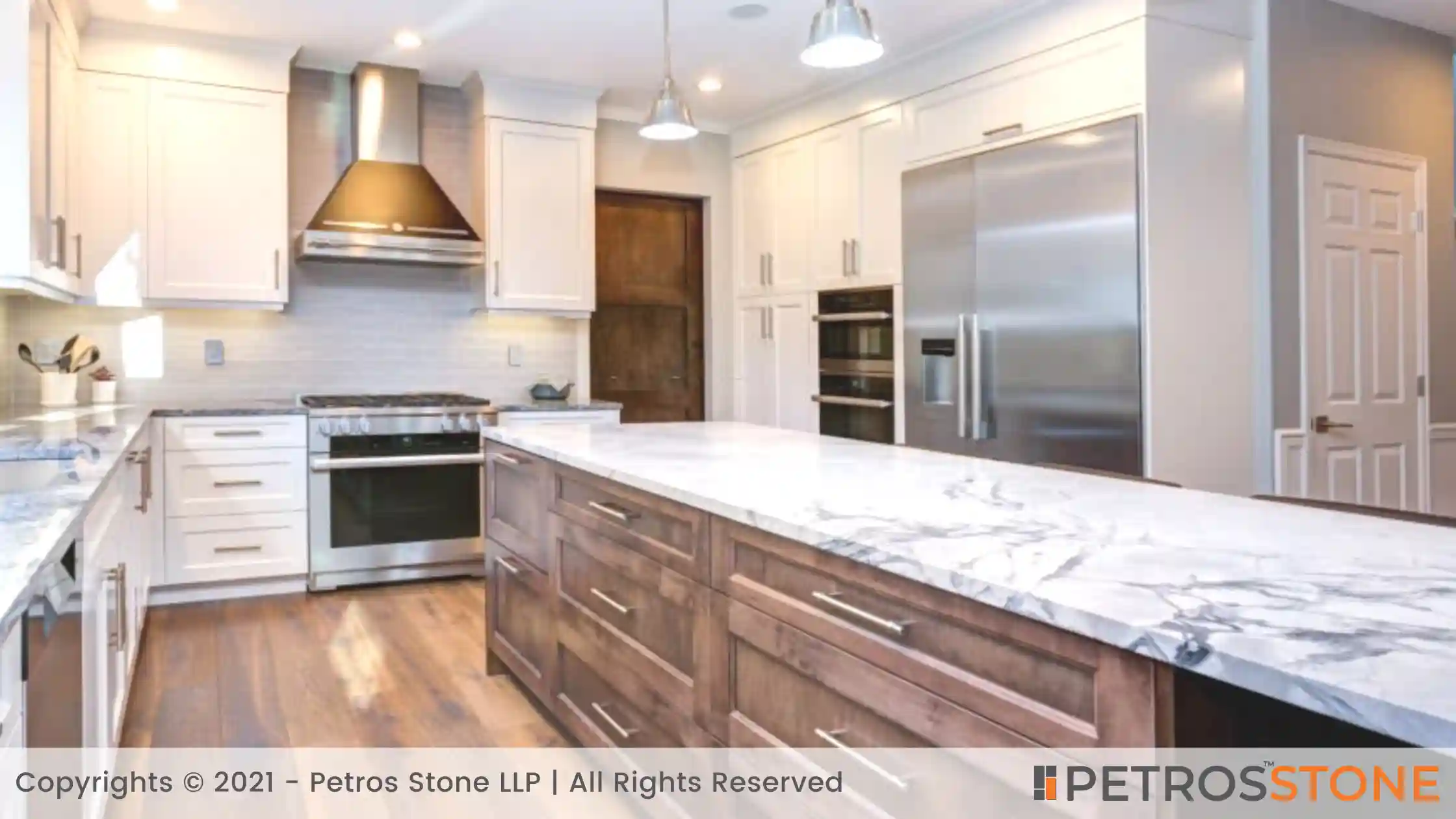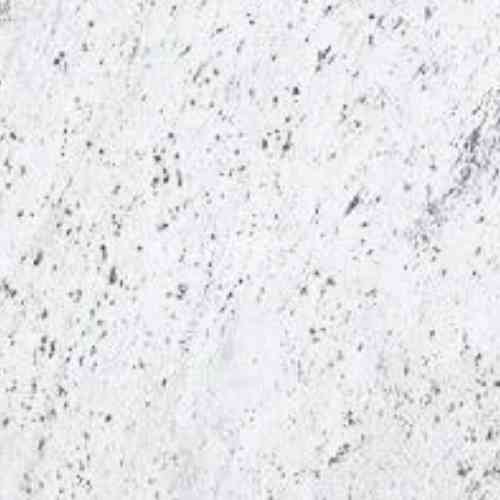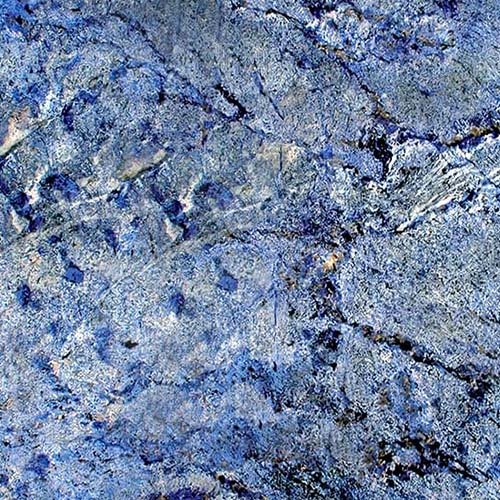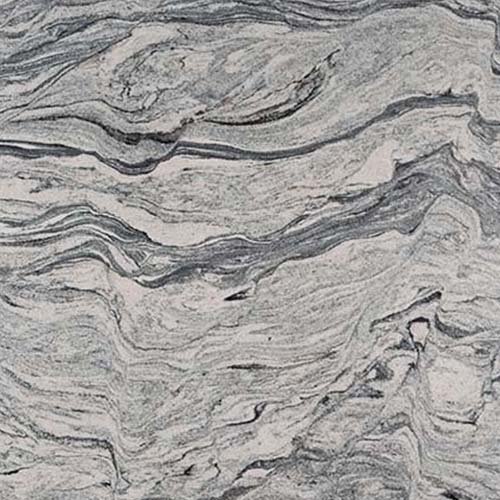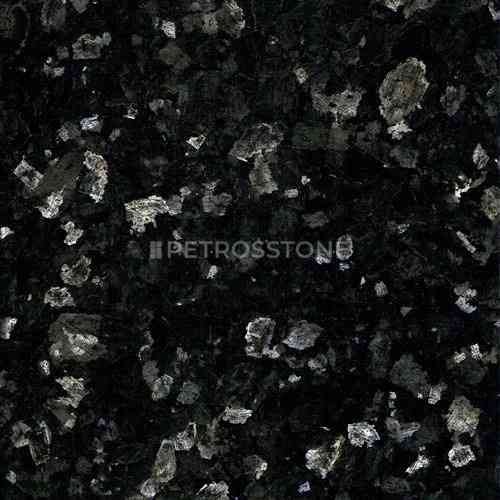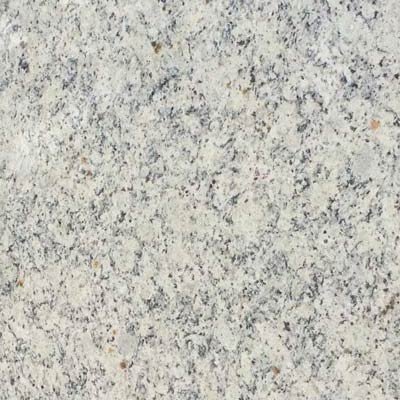
One of the most significant decisions in a kitchen or bathroom remodel is selecting a countertop. The use of knives, spills, hot pans, and cleaning chemicals on countertops is very abusive daily; hence, the decision is not only based on appearance, but also based on the durability, care, and value they offer in the long term.
Quartzite countertops come into the picture here. Quartzite has been a hit among designers and consumers over recent years, and it is commonly sold as a stone that offers the power of granite and the beauty of marble. However, the truth is more subtle. Quartzite is beautiful and tough, yet it possesses several quirks, prices, and complications that any buyer should be aware of prior to investing.
Pros and Cons of Quartzite Countertops
| Pros | Cons |
|---|---|
| Extremely hard and scratch-resistant (Mohs 7) | Porous – needs yearly sealing to prevent staining |
| High heat resistance – safe for hot pans | Edges can chip – rounded profiles recommended |
| Elegant, marble-like appearance with unique veining | Mislabeling risk – some slabs sold as quartzite are actually softer marble |
| UV-resistant – suitable for outdoor and sunlit kitchens | Heavy and difficult to cut – professional installation required |
| Long lifespan (25–30+ years) with proper care | Higher fabrication costs than granite or quartz |
| Adds resale value – seen as premium by buyers | Maintenance required – daily cleaning + sealing |
| Available in multiple finishes – polished, honed, leathered | Hard to repair if chipped or cracked |
In this article, we provide an expert review of quartzite countertops — their origin, advantages, and hidden drawbacks. We break down how quartzite compares with granite, marble, and quartz in terms of strength, cost, and maintenance. You’ll also get insights from real homeowners, designer opinions, and pricing examples to help you make an informed decision. Whether you’re renovating a modern kitchen or planning a rustic outdoor setup, this guide will help you decide if quartzite is truly worth the investment for your home.
- What is Quartzite?
- Pros of Quartzite Countertops
- Cons & Common Problems With Quartzite Countertops
- Which Quartzites are best for Countertops?
- Quartzite vs Other Countertop Materials – Cost Breakdown
- Installation and Maintenance Essentials
- Honest Reviews from Real Homeowners & Designers
- Are Quartzite Countertops Worth It?
- Summary
- Key Takeaways
What is Quartzite?
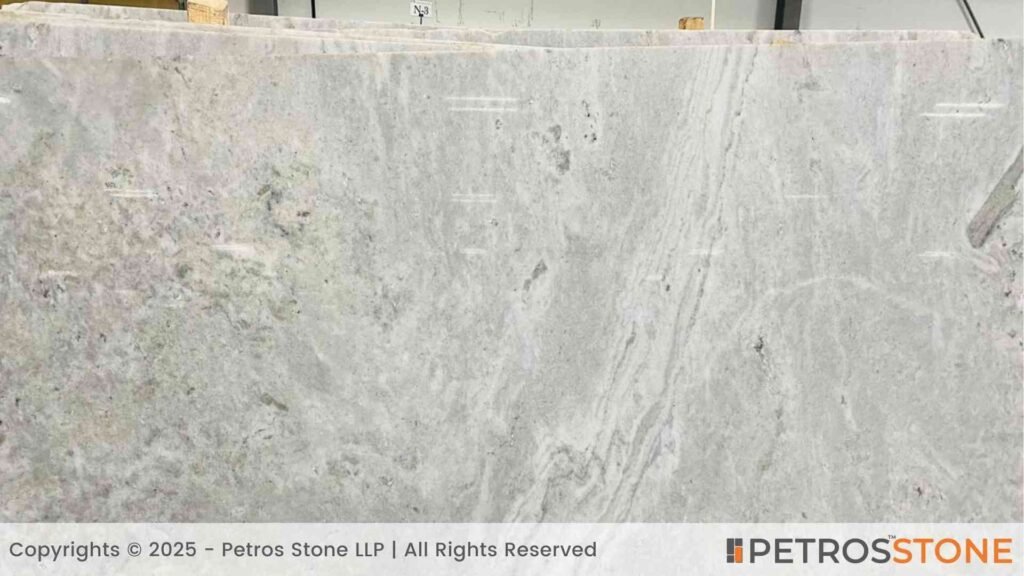
Natural History & Material Science
Quartzite is a metamorphic rock that forms when sandstone with quartz content is subjected to extreme heat and pressure in the crust of the Earth. This is carried out by joining the grains of quartz into a solid and crystalline structure.
Quartzite, unlike marble, consists of silica (quartz, SiO2), almost entirely. This is the chemical difference:
- Calcite (marble) reacts strongly to acids → etching.
- Quartz (quartzite) is acid-resistant, → less etching and high durability.
Quartzite vs Quartz vs Marble
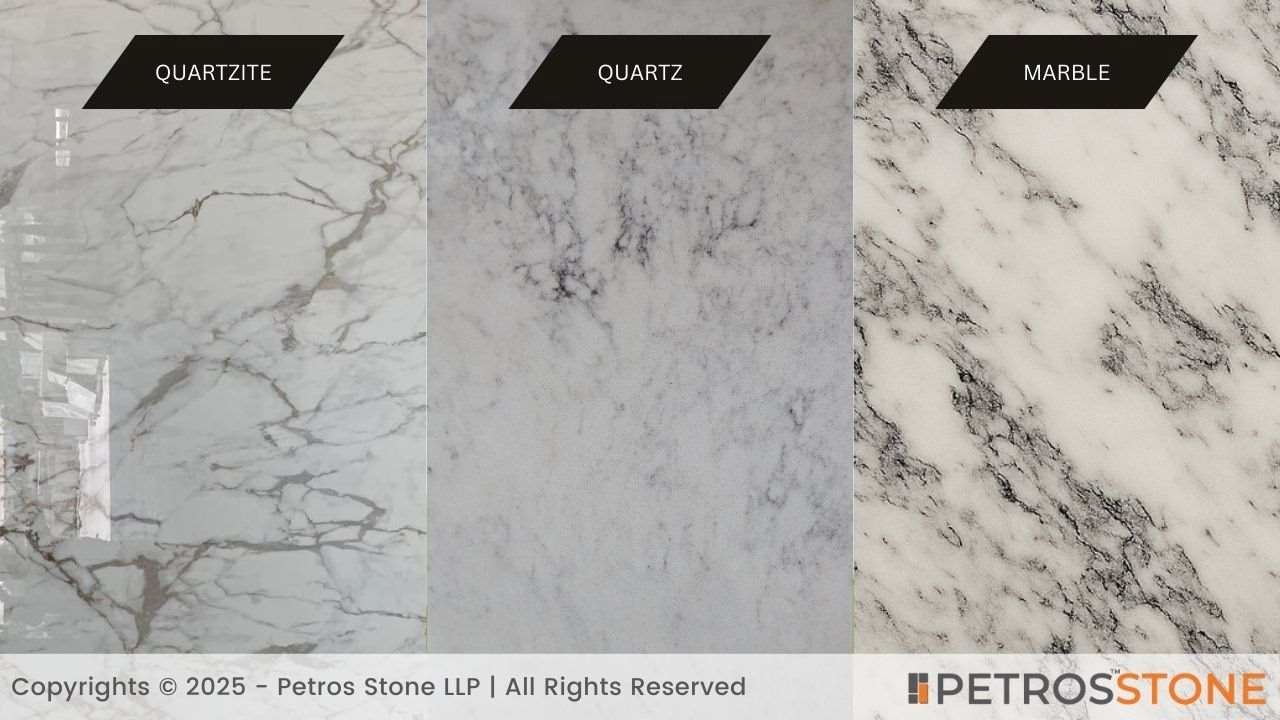
Quartzite vs Quartz vs Marble
| Property | Quartzite (Natural) | Quartz (Engineered) | Marble (Natural) |
| Composition | Pure quartz, natural | Quartz + resin (90/10) | Calcite, natural |
| Hardness (Mohs) | 7 | 7 (but resin weakens heat resistance) | 3–4 |
| Heat Resistance | Excellent | Poor | Fair |
| Acid Resistance | Good | Good | Poor |
| UV Resistance | Excellent | Poor | Excellent |
Why it matters: Quartzite does not act like other quartz or marble, even though it looks the same. The three are mixed up by buyers.
Visual Appeal
The natural veining of quartzite imitates the grace of marble, and yet, it can resist the day-to-day stresses of the kitchen as compared to marble. Colors vary in soft whites and grays (they are favorite colors in timeless kitchens) to bold blues, greens, and golds.
Pros of Quartzite Countertops
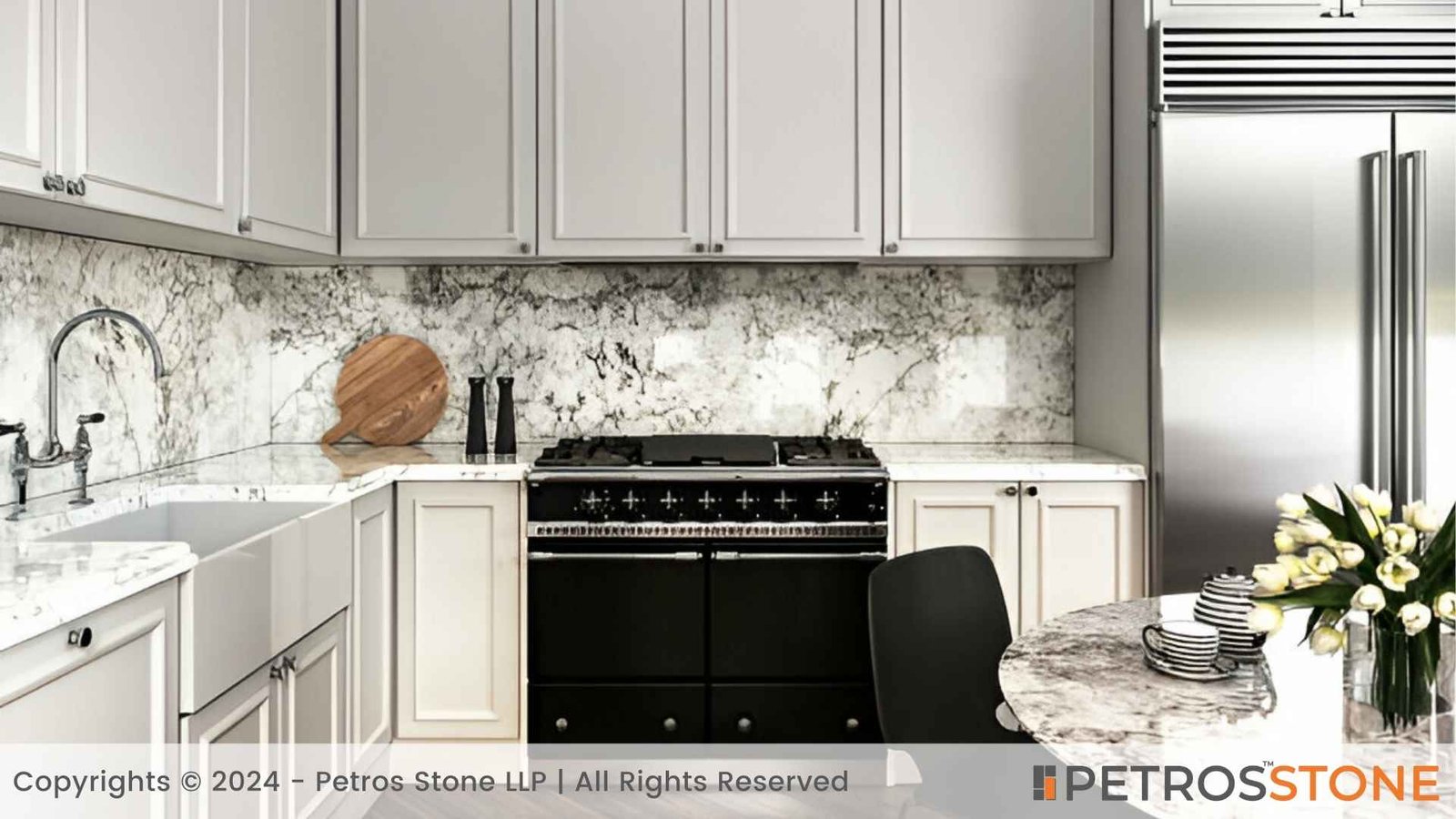
Quartzite has been sold as the “best of both worlds”, and here is why.
1. Durability Beyond Granite
Quartzite (7) is superior to granite (66.5) on the Mohs scale. This makes it:
- Very strong against scratches from knives or pots.
- Not as vulnerable to daily use as marble.
Fabricator note: It is claimed by many installers that quartzite is so hard that it can only be cut and polished with diamond blades and takes more work than granite.
2. Heat Resistance for Real Kitchens
Quartzite can resist temperatures of up to 500°F (260°C), unlike quartz (engineered), which burns at high temperatures. You may place a hot pan on it without any worry of burning.
3. Maintenance Balance
- Seals every 1 year or twice (as opposed to marble, 3-6 times a year).
- Daily cleaning: soap + water.
- Does not need special products.
4. Timeless, Unique Aesthetics
- Each slab is one-of-a-kind.
- Patterns resemble marble, but tend to be more dramatic.
- Available finishes:
- Polished: shiny, reflective.
- Honed: matte, soft look.
- Leathered: rough, hides fingerprints.
5. UV Resistance for Sunlit & Outdoor Spaces
Quartzite will not turn yellow or fade under UV light like quartz. Ideal in sunny-day kitchens, patios, or outdoor kitchens.
6. Adds Long-Term Value
Quartzite is a high-quality material as perceived by homebuyers. Real estate listing indicates that the quartzite countertops can increase the resale value at the same level as granite and marble.
Table – Pros of Quartzite Countertops
| Advantage | Performance/Feature | Practical Impact | Comparison/Notes |
| Hardness & Scratch Resistance | Mohs 7, extremely hard surface | Resists knife cuts, pans, and daily wear | Outperforms granite and marble; quartz may chip under impact |
| Heat Tolerance | Can withstand hot cookware, 500°F+ | Safe for daily cooking; reduces the need for trivets | Quartz can discolor; marble may scorch |
| Aesthetic Versatility | Wide range of colors, veining, and textures | Supports diverse design themes: modern, rustic, or luxury | Each slab is unique; marble is more delicate in pattern |
| UV & Sunlight Resistance | Maintains color in direct sunlight | Suitable for sun-drenched kitchens or outdoor islands | Quartz may fade; marble usually maintains color, but is softer |
| Longevity & Durability | Can last 25–30+ years with proper care | Less frequent replacement; long-term investment | Granite is durable but may require occasional polishing; marble shorter lifespan |
| Custom Finish Options | Polished, honed, leathered | Allows fingerprint-resistant or textured surfaces | Quartzite offers finishes that marble cannot sustain without etching |
| Premium Value | Increases resale appeal | Adds luxury perception to property | Often considered a high-end upgrade compared to quartz or laminate |
Cons & Common Problems With Quartzite Countertops

Quartzite is not maintenance-free, even though it has impressive strengths.
1. Porosity and Staining Risk
Quartzite is porous, although it is harder than granite. If unsealed, it can absorb:
- Wine, coffee, oils.
- Water stains around sinks.
2. Etching from Strong Acids
Quartzite is less prone to wear than marble, but it can still become dull due to vinegar, citrus, or strong cleaning agents.
3. Chipping at Edges
The edges are easily chipped when struck by heavy pans. To minimize this risk, fabricators frequently suggest rounded edges (bullnose or beveled).
4. Slab Variability
- Quartzite is not uniform.
- The veining, colors, and tones differ radically among slabs.
- It is hard to match seams in big kitchens.
5. Mislabeling Problems
A notorious problem in the industry:
- Dolomitic marble is usually the material of soft quartzite sold in showrooms.
- Appears to be quartzite, but scratches and cuts easily.
- Customers are advised to test the glass (true quartzite scratches glass).
6. Weight & Installation Costs
Quartzite is heavy and dense. This means:
- Reinforced cabinetry.
- Only professional installation is possible (no DIY).
- Greater cost of fabrication due to cutting difficulty.
Table – Cons of Quartzite Countertops
| Limitation | Root Cause / Feature | Practical Implication | Mitigation / Notes |
| Porosity & Staining Risk | Natural micro-pores in stone | Oil, wine, and acidic spills may penetrate if not sealed | Annual sealing, immediate spill cleanup |
| Edge Vulnerability | Heavy, brittle edges under impact | Chips possible near sinks, prep zones | Rounded/bullnose edges recommended |
| Slab Variability | Natural formation causes inconsistent color and veining | Seams may be obvious; matching is difficult in large installations | Select multiple slabs at once; ask the fabricator for sample placement |
| Mislabeling & Soft Variants | Some marketed “soft quartzite” is actually dolomitic marble | Poor performance if true quartzite characteristics are expected | Conduct scratch/glass tests; confirm origin with supplier |
| Heavy Weight | Dense stone, ~2.7 g/cm³ | Requires cabinet reinforcement; limits DIY installation | Consult a structural engineer or a pro installer |
| Higher Fabrication Costs | Hardness makes cutting/polishing difficult | Labor-intensive, specialized tools required, increased cost | Factor into project budget; get multiple quotes |
| Maintenance Commitment | Needs yearly sealing and gentle daily cleaning | Neglecting care can reduce lifespan and aesthetics | Use proper cleaners, avoid harsh chemicals |
| Limited Repair Options | Hard surface, difficult to patch seamlessly | Chips or cracks may be noticeable after repair | Consider preventative measures; professional repair only |
Which Quartzites are best for Countertops?
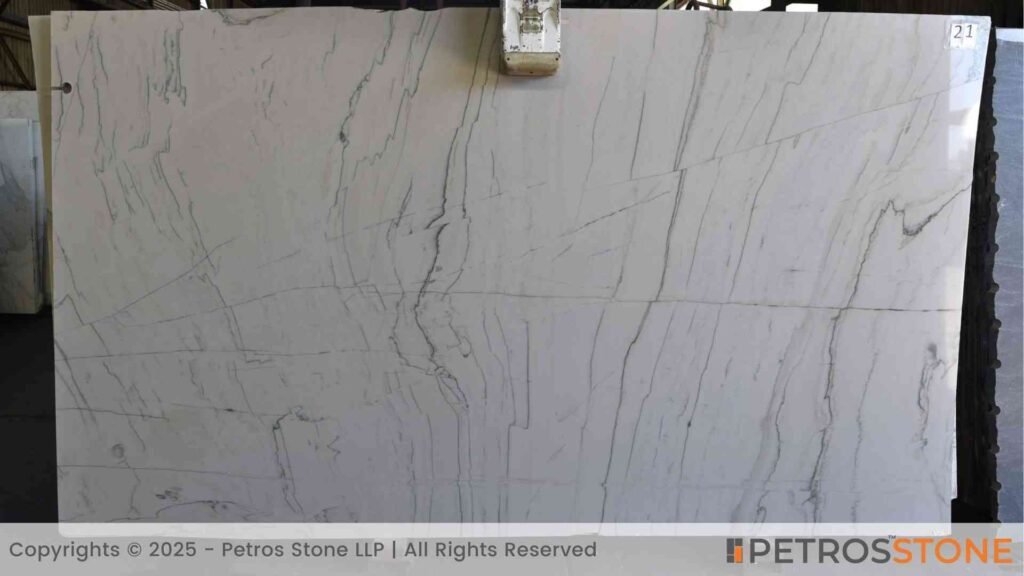



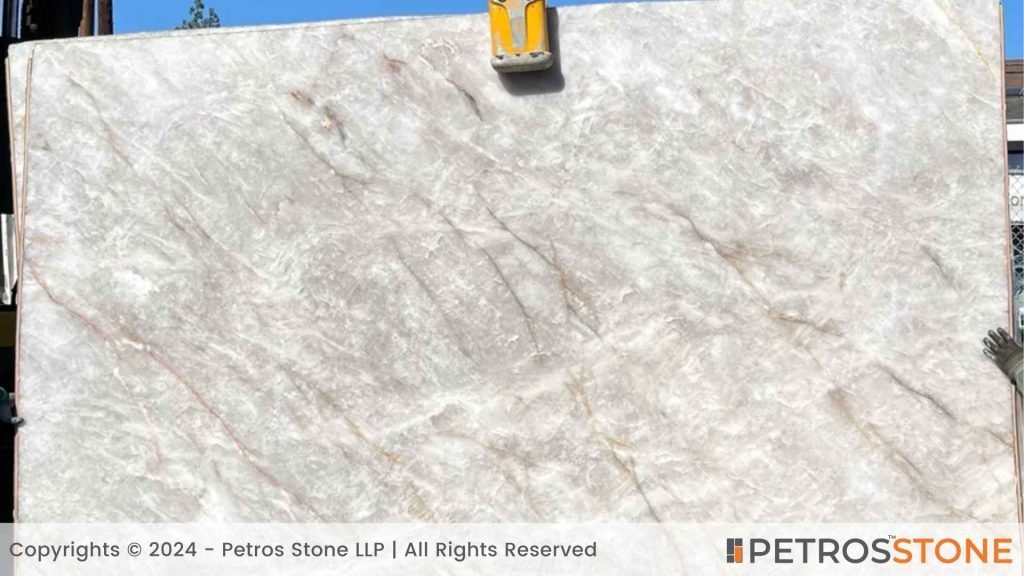

There are numerous types of quartzite, although not all types are practically useful as countertops.
Best Quartzites for Countertops
| Quartzite Type | Appearance | Strength | Best Uses | Notes |
| Taj Mahal | Creamy white, soft veins | Very strong | Luxury kitchens | Subtle elegance |
| White Macaubas | White/gray streaks | Strong | Large, modern kitchens | Works well in open layouts |
| Mont Blanc | White with soft gray | Medium | Bathrooms, small kitchens | Classic, understated |
| Blue Fusion | Blue/green with gold swirls | Medium | Kitchen islands | Bold, artistic look |
| Mustang | Gray-brown tones | Very strong | Outdoor kitchens | Rustic vibe |
| Patagonia | Multi-color with crystals | Strong | Feature walls, islands | High visual impact |
| Cristallo | Translucent white, icy veins | Medium | Bars, backlit islands | Can be backlit for effect |
| Sea Pearl | Soft green-gray tones | Strong | Coastal homes | Subtle but elegant |
👉 Pro tip: Request your fabricator to provide the country of origin – Brazilian quartzites are usually the hardest and most dependable.
Quartzite vs Other Countertop Materials – Cost Breakdown
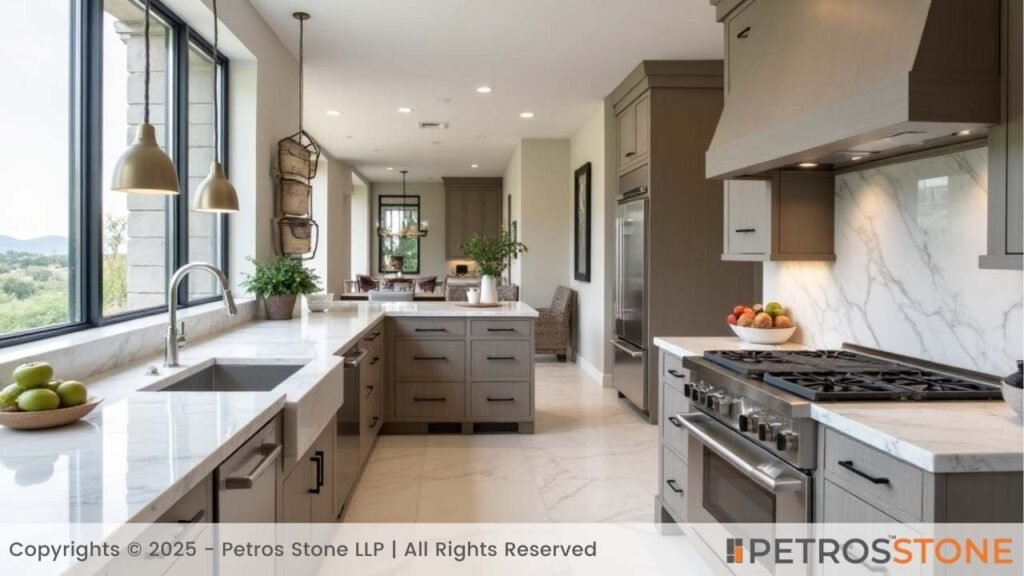
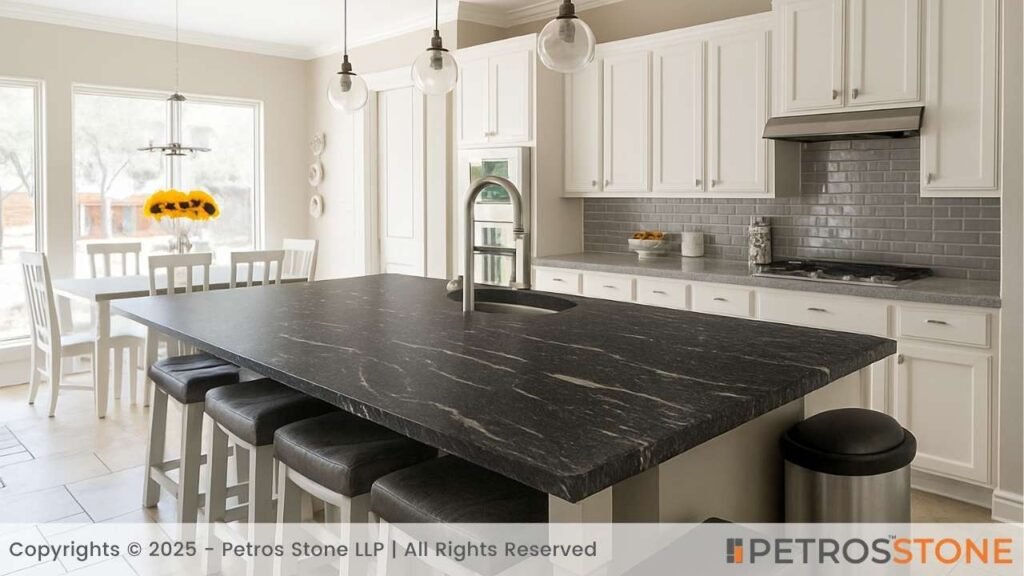
Quartzite is one of the most expensive natural stones that has been applied to homes.
Average Cost of Installed (per sq. ft.)
- India: ₹1,600 to ₹3,700
- USA: $70 – $150
- Europe: €250 – €400 per sq. m
Why Costs Vary
- Slab rarity (Taj Mahal is more costly than Mont Blanc).
- Thickness (3 cm slabs cost 20–30% more).
- Difficulty in fabrication (cutting of quartzite consumes more labor).
- Location and shipping.
Lifecycle Cost Case Example
- Quartzite Kitchen (60 sq. ft.): $7,200–$9,000 upfront.
- Granite Kitchen: $4,500–$6,000 upfront.
- Quartz Kitchen: $3,500–$6,500 upfront.
👉 Quartzite can outlive granite and quartz with less replacement in 15 years, so the overall cost is competitive.
Comparison Table
| Material | Avg. Cost (per sq. ft.) | Lifespan | Sealing | Heat Resistance | Stain Resistance |
| Quartzite | USD 4.25 – 9.75 | 20–30 yrs | Annual | Excellent | Good (if sealed) |
| Granite | USD 0.60 – 1.80 | 20–30 yrs | Annual | Very good | Good |
| Marble | USD 0.43 – 2.45 | 10–15 yrs | Frequent | Poor | Poor |
| Quartz | USD 2.20 – 2.60 | 15–20 yrs | None | Poor | Excellent |
Installation and Maintenance Essentials

Installation Challenges
- Quartzite will need professional installers who have heavy-duty saws and diamond blades.
- The weight of the stone may require additional support for the cabinets.
- The location of the seam should be thought over, as bold veining will appear out of place.
- The cost of fabrication is normally higher than that of granite or quartz, which is difficult to cut.
Edge Profiles (and Why They Matter)
- Eased/Bullnose: Soft and gentle, and chips become less likely- best in a busy kitchen.
- Beveled: Gives a contemporary and stylish look without losing its durability.
- Ogee/Mitered: Beautiful and dramatic, yet easily chipped and difficult to produce.
Maintenance Routine
- Seal: Repaint every 1 year (a professional can complete within 1-2 hours).
- Daily Cleaning: Rub with a soft cloth, warm water, and mild soap daily.
- Avoid: Bleach, vinegar, or rough pads, harsh cleaners.
Quartzite countertops are also strong and may last 25-30 years with good care and maintenance.
Table – Installation & Maintenance Overview
| Aspect | Details | Difficulty/Cost Impact |
| Installation Skill | Requires experienced fabricators with diamond tools | High |
| Cabinet Support | Reinforcement is often needed to bear heavy slabs | Moderate |
| Seam Matching | Needs precise planning for veined patterns | High |
| Fabrication Cost | More expensive than granite or engineered quartz | High |
| Edge Options | Eased (durable), Beveled (stylish), Ogee/Mitered (elegant but fragile) | Varies |
| Sealing Frequency | Once a year, recommended | Low |
| Daily Care | Soap + water cleaning, microfiber cloth | Low |
| Avoided Cleaners | Vinegar, bleach, and abrasives | Critical |
| Lifespan | 25–30 years with regular sealing and gentle care | Long-term value |
Honest Reviews from Real Homeowners & Designers
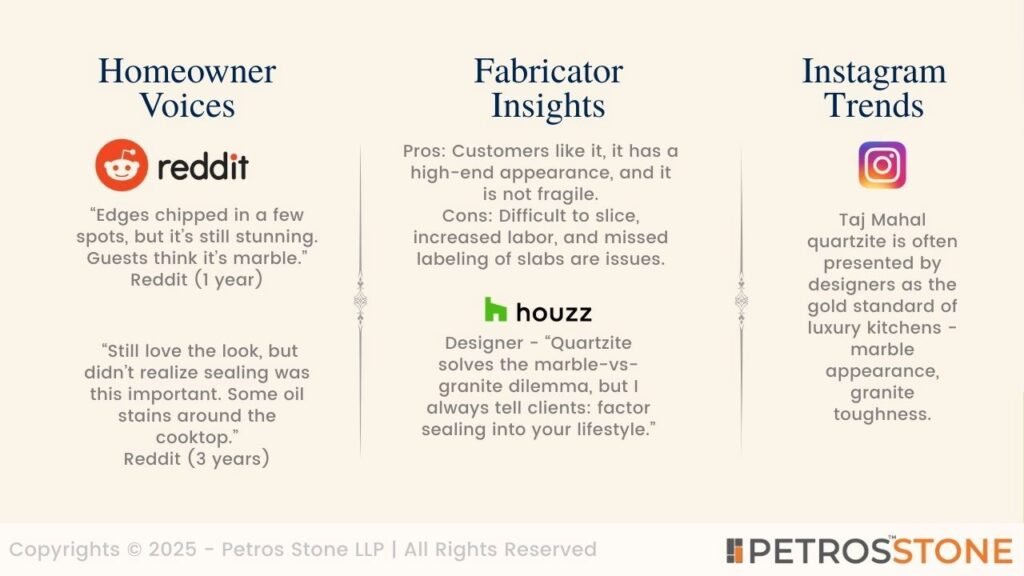
Are Quartzite Countertops Worth It?

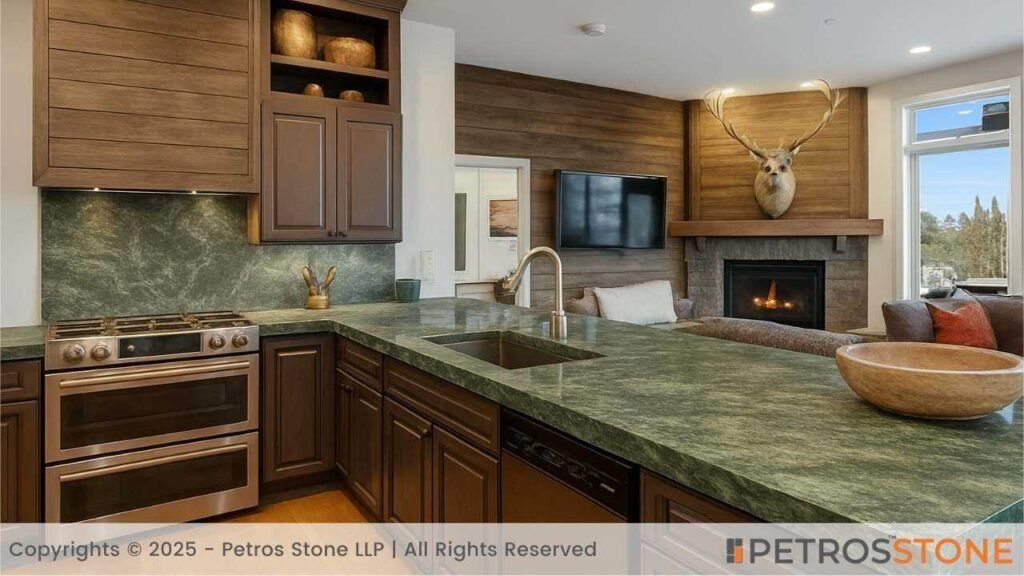
Quartzite countertops are priced largely based on lifestyle and expectations.
Quartzite can be a great option for young families as long as you are strict in terms of care. The wiping and sealing will ensure that juice spills, crayons, or cooking messes do not destroy it daily.
Quartzite is usually ideal for luxury homeowners. It is a blend of marble beauty and granite toughness that enhances daily pleasure and may increase the sales potential in the long run. Kitchens and bathrooms are special because each slab is different.
However, Airbnb or the hosts of rental properties might want to reconsider. Visitors do not stick to sealing or cleaning processes, and therefore, there is a greater threat of etching and staining. Quartz or granite could be more convenient in such situations.
Minimalist couples or design-conscious house owners who appreciate natural beauty, uniqueness, and stability tend to find quartzite worth it.
Decision-making checklist:
- You desire granite power with the beauty of marble.
- You can pledge to seal yearly.
- You will employ professional installers.
- You have ascertained the authenticity of the slab.
- You want long-term value.
Note: Quartzite is a fine option when most of these resonate.
Summary
Quartzite countertops are by no means the most fragile and aesthetically impressive products of the present time. Their natural power, coupled with bold designs resembling marble, makes them very desirable in kitchens and bathrooms. However, the most important thing about them is a combination of beauty and durability. Meanwhile, quartzite requires accountability. Closure, thorough washing, and cautious handling of acidic materials are not merely optionalities but rather compulsory undertakings. To certain homeowners, this continual maintenance might be perceived as a hassle compared to low-maintenance options.
Cost is also a determining factor. Quartzite has the potential to increase resale value, but its cost to install, fabricate, and maintain might not fit all budgets. It is important to assess the short-term affordability as well as the long-term investment. Finally, quartzite is right when one loves natural uniqueness, is willing to put in moderate maintenance, and prefers surfaces to age beautifully. Granite or quartz may be a more prudent choice for buyers who want predictable color consistency, low maintenance, or stricter budgets. The reason to choose quartzite is rather the lifestyle fit than the trend.
Key Takeaways
- Quartzite offers the beauty of marble with the toughness of granite, making it ideal for kitchens that need both style and strength.
- It’s highly resistant to scratches, heat, and UV exposure, but requires annual sealing to prevent staining from oils and acids.
- Cost-wise, quartzite is more expensive than granite or quartz, but it can outlast both with proper care, offering excellent long-term value.
- Mislabeling is a serious issue in the market, with softer dolomitic stones often sold as quartzite — always test or verify your slab.
- Best suited for homeowners who value natural aesthetics and don’t mind moderate upkeep, but may not be ideal for rentals or heavy-use areas without proper maintenance.
Feel free to get in touch for a free consultation, quote, and get a detailed understanding from our experts here at Petros®. Visit https://petrosstone.com/ or call +91-8446360361 and WhatsApp

Hello!
I’m Dr Mridali, a content writer with a background in dentistry and a passion for turning complex topics into clear, engaging stories. From healthcare to architecture, I create blogs that inform, educate, and connect with readers. With every piece, I aim to blend accuracy with creativity to make information truly valuable.
Brown Granite
White Galaxy Granite
Blue Bahia Granite
Silver Cloud Granite
Black Pearl Granite
Dallas White Granite

